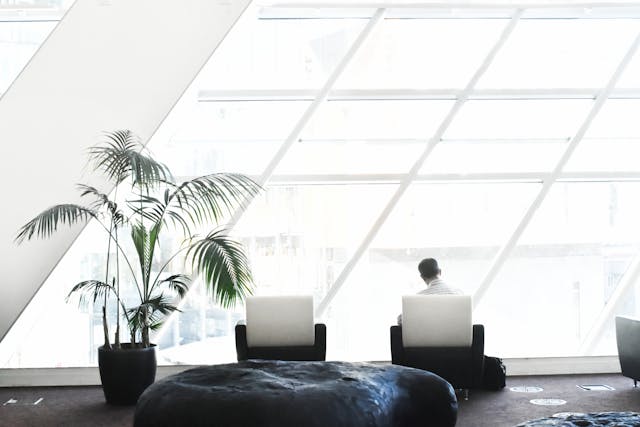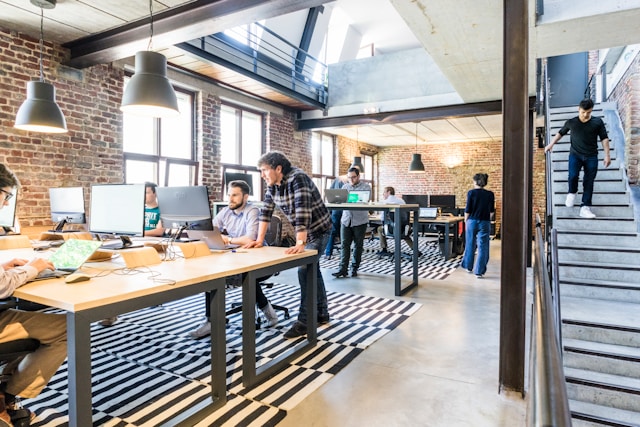
London’s dynamism, vibrant culture, and thriving business ecosystem have earned the British capital a reputation for being a global leader in cutting-edge design. This characteristic is also reflected in the city’s office spaces, which are often at the forefront of interior workplace design.
In this article, we take a look at the latest, top office design trends that London-based corporates are embracing in their offices.
London: A hub of innovation and creativity
London offers unparalleled opportunities for companies seeking expansion and success. Its strategic location, world-class infrastructure, and access to top talent make it an ideal base for growth-focused businesses. This is one of the reasons why there are nearly 90 corporate headquarters located within the city’s boundaries.
In many of these corporate workspaces, innovative and inspiring office design trends are being adopted and setting an example of how the office of the future should look like. Let’s look at the different ways in which they’re achieving this.
Current office design trends in central London
1. Flexible workspaces
With the rise of remote work and the growing emphasis on a good work-life balance, London corporates are increasingly prioritising flexibility in their workspace design.
Example: Google’s new UK headquarters in King’s Cross, which has been designed without any columns to create extensive open-plan floors. This type of open-plan layout, by design, is often used alongside modular furniture and adjustable partitions, which can be easily rearranged to create more quiet space or collaborative spaces, adapting the workspace to different tasks and needs.
2. Biophilic Design
Many London companies are bringing nature indoors by integrating biophilic design elements into their offices. Beyond just letting in more natural light and having some philodendrons in the corners, including actual biophilic design principles in your office design can improve the physical and mental health of office workers and enhance employee satisfaction.
Example: Amazon’s headquarters in Shoreditch, which are surrounded by greenery and feature a mix of indoor and roof gardens to give employees a chance to take a break and relax in a natural environment, even in a busy city like London.
3. Technology Integration
As we move further into the 21st century, design and technology are being integrated in innovative ways. Nowadays, London companies have access to technologies specifically designed to improve collaboration, productivity, and increase creativity in working environments.
Example: Facebook’s offices in Fitzrovia, which are the workplace of their tech teams, have integrated state-of-the-art technology into their office layout, which includes an Oculus VR lounge for both employees and visitors.

4. Designing for well-being
Employee well-being has become a top priority after the return to the office post-Covid, and many London companies are creating a healthier workplace by incorporating dedicated wellness areas in their office designs, from yoga or quiet rooms to fitness facilities, gardens, or recreation-dedicated spaces.
Example: Unilever’s headquarters in Blackfriars were modernised to create a workspace with plenty of natural light, fresh air, outdoor spaces including roof gardens, and multiple recreation areas.
5. Workspaces that mirror corporate identity
From the facade to the smallest aspects of interior design, thoughtful workplace design choices can become expressions of brand identity that reinforce a company’s corporate culture.
Example: Burberry’s headquarters in Westminster were renovated ensuring the new look was an accurate match for the company’s corporate values of creativity, forward-thinking spirit, and pride of heritage. Instead of moving to newer premises, the company invested in a conservation and retrofit project that highlighted the building’s historical heritage and incorporated modern and eco-friendly construction and design principles.
6. Sustainable design
As regulations that govern the impact of buildings on the environment tighten in the UK and beyond, sustainability is set to become increasingly important for all office-based businesses.
Example: When Bloomberg’s European headquarters opened in the City of London, the building set a benchmark for sustainable office design by achieving the highest BREEAM score of any office development, thanks to environmental features like breathing building systems and extensive rainwater harvesting and greywater recycling facilities.
7. Improved space allocation
More and more companies are moving away from conventional office floorspace distribution options and shifting towards models where space allocation is based on real needs.
Example: Seeing that most senior managers at HSBC spent more time travelling than at the office, the company redesigned their executive floor at their offices in Canary Wharf replacing private offices with hot desking, meeting rooms, and collaborative spaces, which were more in line with the staff’s work needs and patterns.

8. Community first
Recognising the importance of fostering a sense of community and connection among employees, some London companies are creating communal spaces where staff can socialise and collaborate.
Example: The new, modern office design of Airbnb’s offices in Clerkenwell was actually inspired by a traditional English village atmosphere, featuring communal spaces oriented towards interaction and functionality.
Conclusion
The latest trends in London’s office design reflect the city’s dynamic and innovative spirit and set an example of how to create inspiring and productive work environments. As the city’s office market continues to evolve, we can be sure that London’s office spaces will remain a source of inspiration and creativity for forward-thinking businesses.
Looking for design-forward modern offices in London?
If the above inspired you and you’re now looking to upgrade to a more modern workspace where office design is the focus, there are many options in Central London and in Greater London boroughs that exhibit the top office design trends we’ve covered here.
Whatever your requirements, a new office space might be a sensible investment for your business. We provide a wide variety of office spaces to meet any company’s operating demands and ambitions. Please phone 020 3965 9617 to chat with one of our office space professionals. Our specialist consultants are here to help you locate the ideal office space in London that meets your individual needs.
You can also learn more about the London office market by checking out some of our other recent articles, below.
New Developments in London Office Space: Central
Benefits of Modular Office Furniture for Flexible Workspaces
How to Upgrade Your Office Space in Central London
Navigating Central London Office Market Trends
Emerging Areas for Affordable Office Space: London
Historical Buildings with Offices to Rent in Central London
5 Expert Tips on the Best Way to Find Commercial Office Space to Rent in London
Sustainable Workspaces: How Office Spaces in London Are Adopting Eco-Friendly Practices
